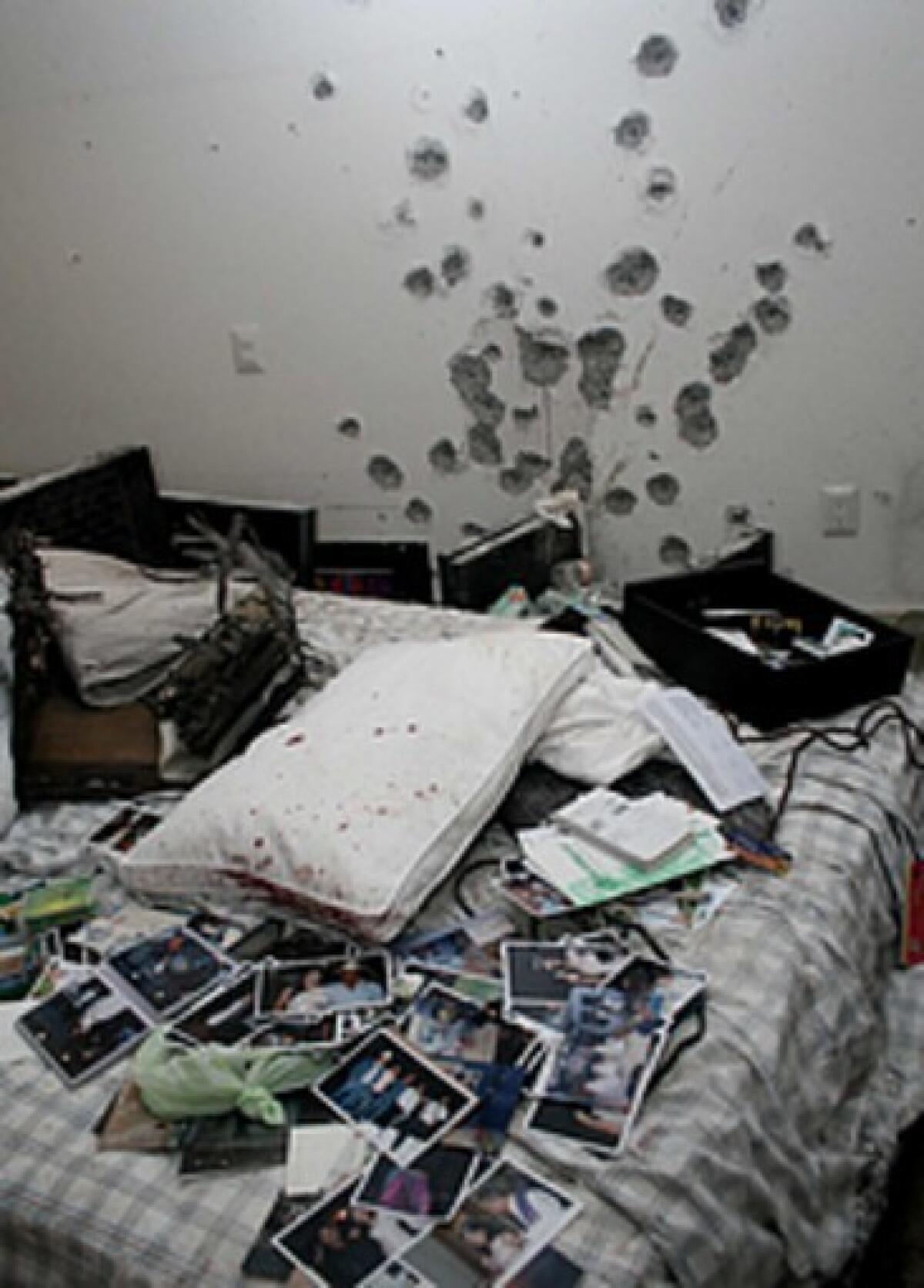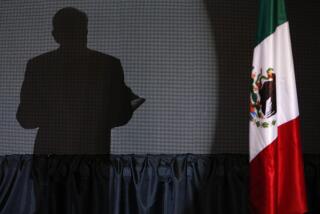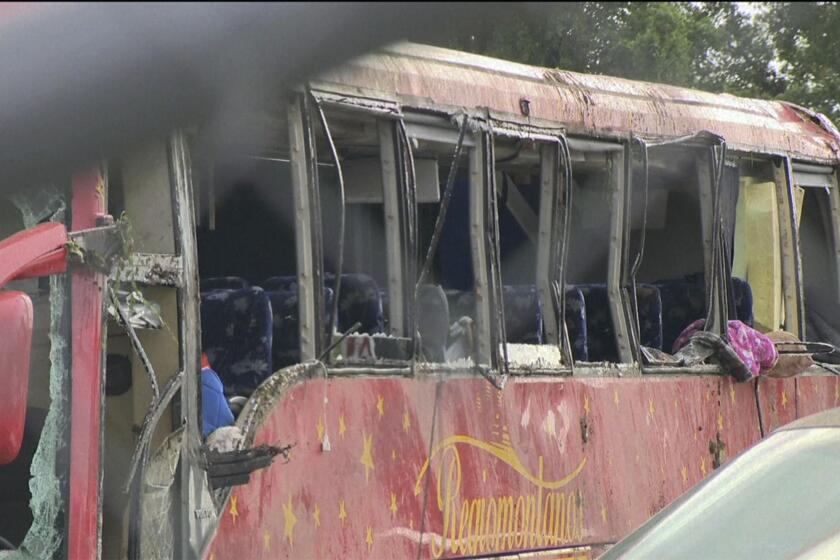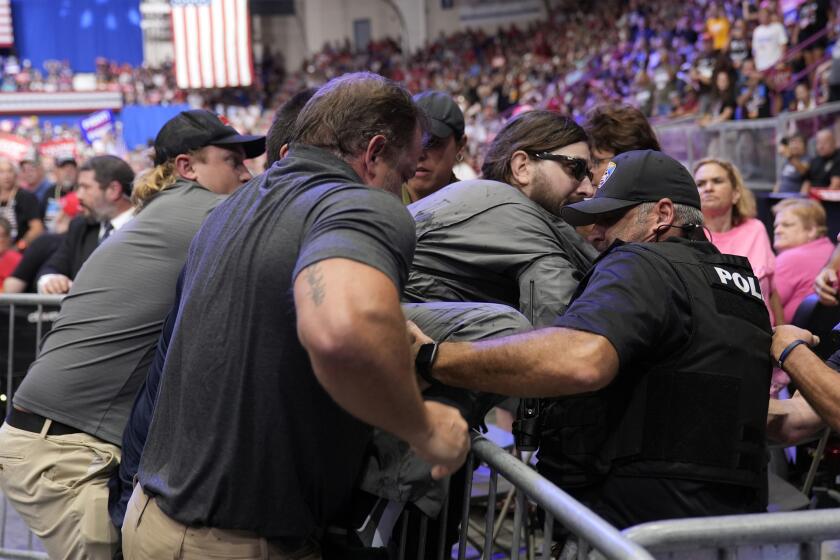Staged photos of slain drug lord stir controversy

The dead drug lord lay on his back, blood-soaked jeans yanked down to the knees. Mexican peso notes carpeted his bullet-torn body, and U.S. $100 bills formed neat rows next to his bared belly.
The gory photograph of Arturo Beltran Leyva, one of Mexico’s most wanted kingpins, was among those widely published here during the last few days following his death in a shootout Wednesday with Mexican marines in Cuernavaca, capital of the central state of Morelos.
Even in a country where pictures of gruesome crime scenes routinely show up on the front pages of newspapers, the Beltran Leyva images have stirred controversy over who staged the tableau and whether Mexican authorities did so to send a taunting message to the rest of his powerful drug trafficking gang.
Several commentators said the photos, some of which showed religious jewelry laid across Beltran Leyva’s stomach, were evidence that the government had adopted the macabre public-relations methods used by hit men. Gang members often line their victims’ bodies along the roadside or hang them from bridges, leaving menacing, handwritten messages to scare foes.
The federal government, locked in a violent 3-year-old crackdown on drug cartels, has denied any responsibility for the photographs, calling the images “pernicious” and “reprehensible.”
“The Mexican government fulfills its duty to halt organized-crime activity, but it does not get into personal humiliation,” Interior Minister Fernando Gomez Mont said in a television interview.
But that has not laid the doubts to rest.
“Photographs of a corpse: law or vengeance?” the Excelsior newspaper asked in a headline over the weekend.
“The humiliated corpse, with its pants lowered, covered with bloody bills in one photo and religious objects in another, showed the typical modus operandi of narco-traffickers,” security analyst Jorge Chabat wrote Monday in El Universal newspaper, which earlier ran a version of the photograph on its front page. “The only thing missing was a sign saying ‘so that you learn to respect’ to confirm the unmistakable stamp of an act of narco revenge.
“The problem is much deeper: It has to do with the absolute lack of democratic culture and respect for human rights in our country.”
Among the main questions was who took the time to cover Beltran Leyva from neck to knees with blood-smeared bills, apparently to publicize the scene. Most of the bills appeared to be 500-peso notes, which are worth about $39 each. Another image, taken without the bills, showed Beltran Leyva’s face disfigured by bullets.
Beltran Leyva, who called himself the “boss of bosses” and headed a family-run gang based in the northwestern state of Sinaloa, was killed when marines stormed an upscale apartment complex Wednesday. Six bodyguards and one commando also died.
Gomez Mont said the marine commandos, who are part of the Mexican navy, left the crime scene in the hands of coroner specialists from Morelos. He said federal officials would help state authorities try to figure out how the photographs were taken and distributed.
Morelos officials said Monday that they had opened an investigation.
El Universal published a series of photographs Sunday showing three people in civilian clothes, with faces digitally blurred, lifting Beltran Leyva’s body by the arms and belted pants. Pictures showed gloved hands handling the bloodied bills and then portrayed the body covered with them.
The case sparked debate among journalists over newsworthiness of the photographs, which were credited to Mexican newspapers and wire services. But mainly it had people wondering whether the drug war, with 15,000 dead in three years, had both sides adhering to the same vicious rules.
“It is the state forces that adopted the basic language of the narco,” columnist Luis Petersen Farah wrote in the Milenio newspaper. “ ‘There’s your money,’ the photograph seems to say. It’s the language of war.”
More to Read
Sign up for Essential California
The most important California stories and recommendations in your inbox every morning.
You may occasionally receive promotional content from the Los Angeles Times.






